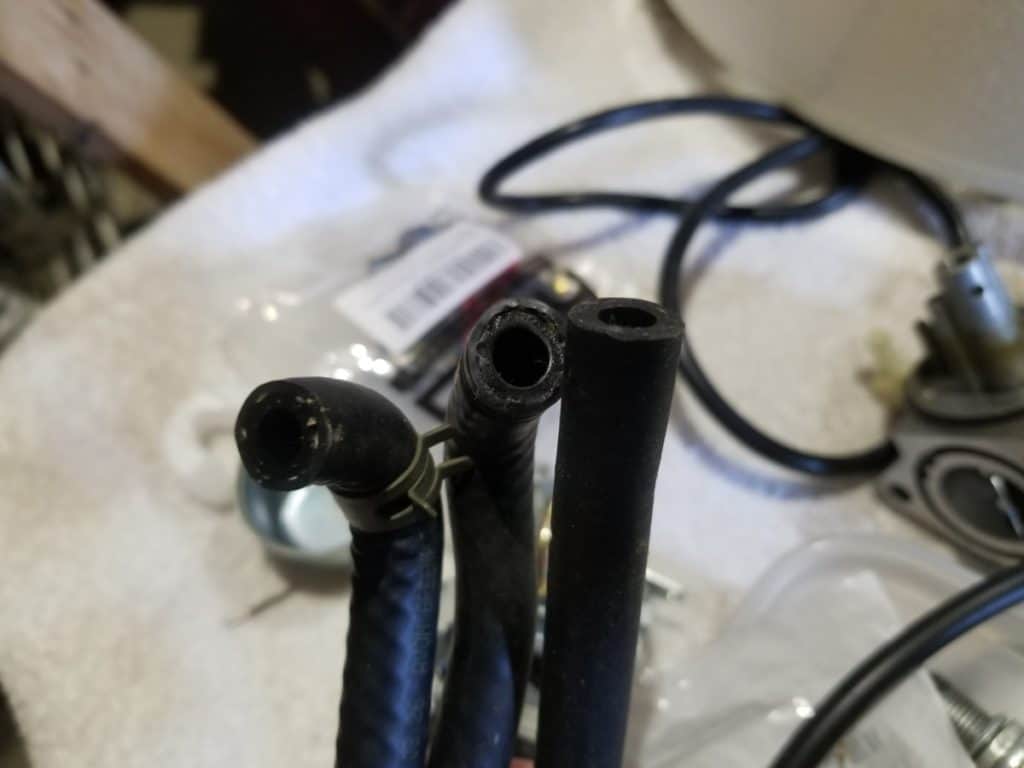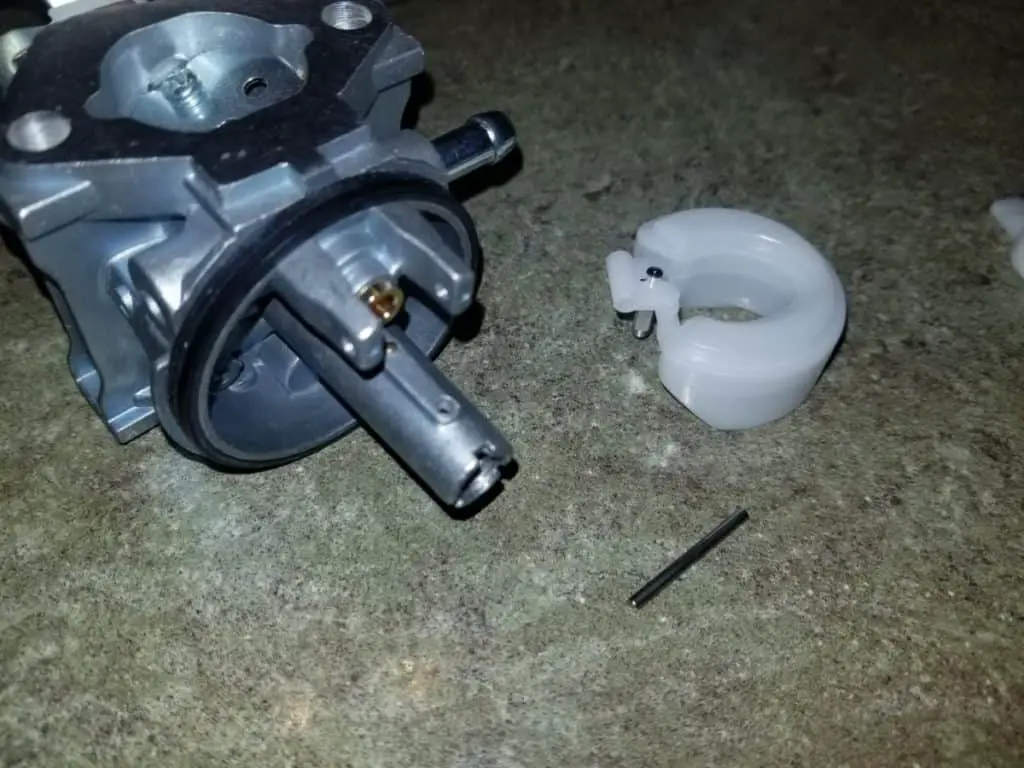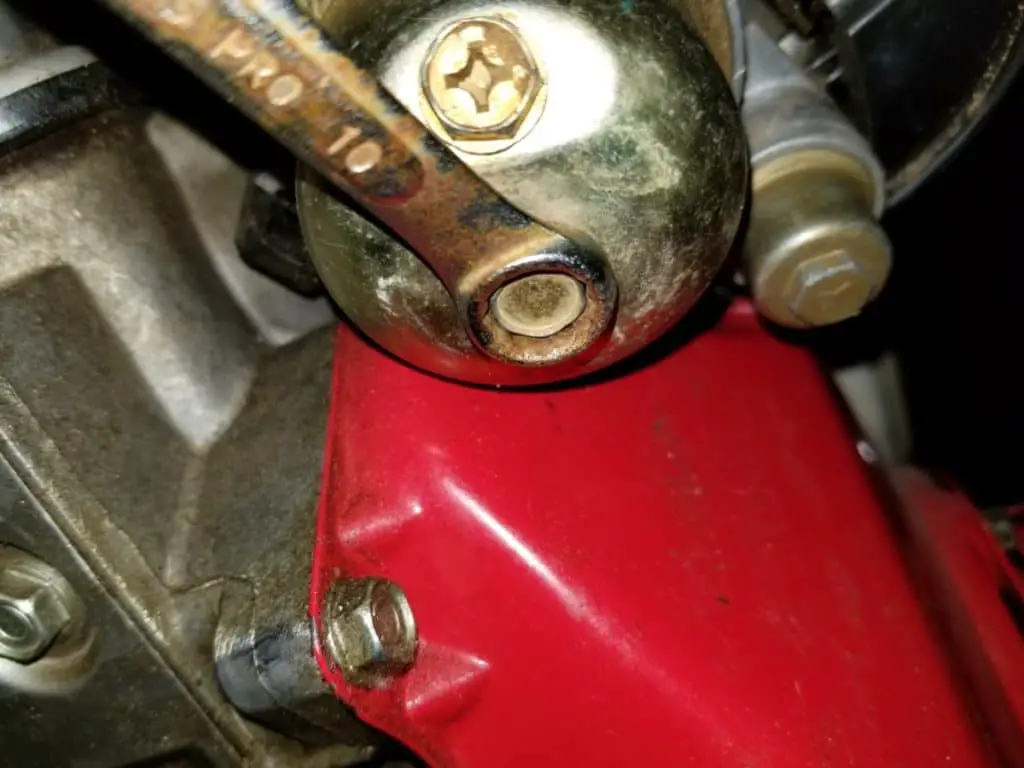It’s a crazy guess, but I’m assuming you’re here because you went to start your generator during a power outage and you saw a glistening pool of gasoline underneath it? Congrats! You’ve got a gas leak!
A generator will leak gas if the fuel lines are cracked, an external fuel pump gasket is compromised, the float needle in the carburetor is stuck open, or if the gaskets on the carburetor themselves are damaged.
Thankfully, most gas leaks can be solved pretty easily and with a few inexpensive parts if any are needed at all. There are a few main points to check and we’ll go over those in this article and how to get things back up and running.
Why a Generator Leaks Gasoline
| Problem | Symptoms | How to Fix |
|---|---|---|
| Cracked Fuel Lines | Fuel leaks occuring at connection points with the fuel lines (carburetor, in-line fuel filter, etc.) | Measure inside diameter of fuel lines and replace |
| External Fuel Pump Leaking | Fuel dripping from where the two halves of the fuel pump pinch the diaphragm | Replace fuel pump or disassemble and clean. Make sure all screws are tight |
| Carburetor Float Needle Stuck Open | Gasoline dripping from your air filter, or gasoline mixed in with your oil | Remove and thoroughly clean carburetor and fix float needle seat |
| Carburetor Gaskets Compromised | Fuel dripping from the bottom or top of the bowl of the carburetor | Check if bolts are loose first, and if they are not tight and still leaking then replace the gaskets |
Let’s get into it!
Cracked Fuel Lines
The first thing you’re going to want to do is trace all of the fuel lines from your tank down to your carburetor. Your generator might also have an external fuel pump in which case that will be the middle man between your tank and a carburetor.
Be sure to flex and run your hand down all the lines to check for any wetness and to look for any cracks. It’s probably best to use a flashlight to see everything clearly.

You can also disconnect some of the fuel lines from the carburetor or the fuel pump after you shut off the fuel shutoff valve (petcock). Slide the clamps securing the fuel lines up with a pair of pliers and then pull the hose off of its connection point. You might need a flat head screw driver to help remove the hose.
Inspect the ends of the hose carefully. This is usually where you’ll see that they are cracked and split and they are just being held on by the clamp itself but gas would still leak out of those cracks. If you see that your hoses are damaged, you will need to replace them. Measure the inner diameter to know what size hose to buy.
I have a link here to the most common fuel hose size (1/4″) that you can get on Amazon to get you back in business.
External Fuel Pump
The dreaded external fuel pump is notorious for leaking on many makes and models. More than likely you probably won’t even have one but if you do they’re controlled with crankcase pressures coming in from a hose that attaches to the side of the crankcase. There’s a diaphragm inside that is pressed between the halves of the fuel pump.

Where the two halves of the fuel pump and the diaphragm squeeze together there’s often leaking that occurs at this point. I know on the last model of generator that I fixed up this was the case. I actually went out and bought a new one and before I installed it I decided to take the old apart and completely clean it the best that I possibly could. I tightened all the screws and reinstalled it and it worked! I was out $30 since I had already opened the new fuel pump.
Hopefully that’s all you’ll need to do. When you take one apart just be very slow in the process of doing it so that you see exactly where everything goes and it definitely helps to use your phone to take pictures of every step of the process just in case you get ahead of yourself and drop a part or a piece later and don’t remember where everything went.
Carburetor Flooding
The carburetor flooding and leaking gasoline from your generator is an all too common problem that comes from the float needle valve not seating properly. This allows for gas to keep flooding in from the gas tank into the carburetor without stopping.
Inside the bowl of the carburetor there’s a float that rises up as the gas comes in from the fuel tank and when it gets to a certain level the float is attached to a needle that pushes up into a seat to stop the fuel flow.

If a piece of dirt gets jammed up in there or the needle seat (or needle itself) gets deformed since one of the two is made of rubber, then the gas continues to flood in. The gasoline will work its way up the jets and the ports of the carburetor and spill into the throat of the carburetor which is the main tube that runs from your air filter to your intake.
Depending on the angle of the carburetor, your gasoline will either flow out towards the air filter and you’ll see a collection of gasoline underneath or it will flood back in to your intake and combustion chamber.
If it goes towards the intake you won’t see the problem right away. You may first notice that you can’t pull the recoil starter cord since you cannot physically compress liquid gasoline that it sitting on the piston in the combustion chamber. It will eventually work its way passed the piston rings and down into your crankcase. When you remove your oil dipstick you have oil and gas flooding out.
To fix this problem in are going to have to disassemble your carburetor, thoroughly clean it, fix the float needle seat, reinstall it, and change your oil.
I have a complete article that goes step-by-step through the process of working on a generators carburetor as well as an accompanying video and you can check that out here.
Carburetor Gaskets Rotted Out
Finally, you’re going to want to check the gaskets on your carburetor to see if they’re ripped or deteriorated.
There’s 2 or 3 that you’re generally going to want to look at depending on the model carburetor that you have.
The first one is with the main bolt at the bottom center of your carburetor bowl. If you feel gasoline coming from there then your gasket is probably ripped or deteriorated or the bolt is not screwed in all the way.

I’ve come across loose bolts on carburetors quite a bit and I’ve even done it once or twice myself when I field stripped everything and put it back on but forgot to give it a final tightening.
Replace the gasket if necessary.
Your carburetor might also have a drain bolt off to the side of the main bolt on an angle. Check that gasket in the same manner and make sure that that screw is tight and replace if necessary.
You also might have gasoline leaking from the bowl gasket itself which you’d see after removing the main bolt and then gently twisting (optional) and pulling down on the carburetor bowl. There’s a rubber o-ring-style gasket that goes around in between the bowl and the carburetor body and that can easily get pinched, torn, dry rotted, or deteriorated in some way and cause a leak so replace that also if necessary.
I hope these tips helped you out! I’ve been fixing generators and other small engines for quite a few years now and I’m always open to learning something new. If you have any other ideas on why your generator might be leaking gas, feel free to send me an email at contact.homebatterybank@gmail.com and I would love to update this or any other article!

